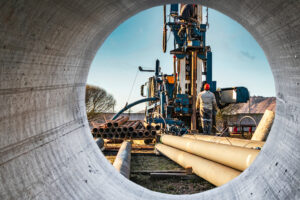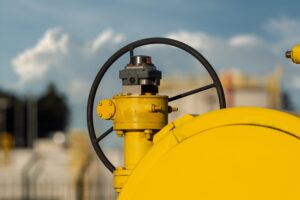Frozen pipes is a common problem during the winter, and pipes that burst can also be a hovering threat during cases of extreme weather such as hurricanes and major storms. This is why pipe protection is extremely essential no matter the weather. To avoid these kinds of problems, you should protect your piping system, including the piping system that delivers heating oil and gas to your property.
Why Winterization Is Necessary
Winterization is pipe protection that prevents damage to piping systems since most liquids begin to expand and become less dense at low temperatures. A good example is water, which begins to expand when its temperature falls below 4°C. In turn, water freezes and exerts up to 2,000 pounds of pressure per square inch on the walls of pipes causing them to burst. Winterization also makes it easier to pump liquids like oil, because such liquids tend to become more viscous as temperatures fall below 0°C. For instance, the paraffin wax in oil products such as diesel tends to precipitate and build-up wax deposits along the walls of pipes. Over time, these deposits clog fuel nozzles and other piping equipment pieces.
Winterization Techniques
There are two main methods of winterizing pipes:
- Dry winterization – this entails winterizing piping systems using hot air or non-liquid strategies.
- Wet winterization – this technique involves winterizing pipes using hot water or steam. In this case, both the heating and piping systems are winterized.
Below is a detailed look at each of these pipe protection techniques. Check out our pipe protection products.
Heat Tracing
Heat tracing is simply the application of heat along the length of a pipe to keep it and its contents at a desired temperature. Most people use electricity to winterize their piping systems. To achieve this goal, a heat tape/cable that consists of two wires enclosed in insulation material is attached along the length of a pipe. After plugging into an electric power outlet, the heating cable emits heat that prevents the pipe it is attached to from freezing. This technique has several advantages over other winterization methods. Firstly, it enables uniform application of heat throughout the length of a pipeline. Secondly, heat-tracing systems are controllable, meaning you can vary the heat/temperature along a pipe. In addition, this technique is more cost-effective compared to methods that require flushing of piping systems with hot liquids. However, according to the US Consumer Product Safety Commission (CPSC) you should be carefully when using heat-tracing products since they can cause fires. Nevertheless, the CPSC states that heat-tracing fires are usually caused by improper installation.
Insulation
Another common pipe protection method is insulation. This strategy involves wrapping pipes with suitable insulation material such as fiberglass, cellular glass, vermiculate, phenolic foam, perlite, calcium silicate, mineral wool, polystyrene, polyurethane, elastomeric foam, amorphous hydrophobic silica, and polyisocyanurate. These materials can handle temperatures as low as -30°C. In fact, most are widely used to insulate buildings and even equipment like heat exchangers. Moreover, the low thermal conductivity of these materials makes them ideal choices when insulating pipes that transport hot liquids. Workers can touch the surfaces of piping systems without fear of sustaining injuries. When installing insulation material, you should follow the manufacturer’s instructions. For instance, you should only use nonflammable material such as fibrous glass to cover a pipe that also has heating cable attached.
Process Heating
Besides the pipe protection techniques above, you can use process-heating technology to keep your pipes from freezing in winter. This winterization method comes in handy when dealing with oil, gas, or water pipes whose diameter is large. In such cases, heating cables may not work well unless you wrap every square inch of exposed piping systems with tracers. Although it is possible to do so, such an approach is not financially feasible. With this in mind, some common process heating mediums include- thermal oil, water, and glycol. Some manufacturers have even come up with glycol-based anti-freeze products that you can pour into pipes and hoses that are prone to freezing in winter.
Heated Enclosures
Another winterization strategy that works is covering piping systems with heated enclosures. Such an enclosure is particularly ideal for winterizing tanks and piping systems located outdoors. You can use electricity, or solid fuels, to keep the temperature inside your enclosures above freezing point. However, you should not remove the snow that piles around and on top of pipe enclosures regularly because it is an effective insulation material. In fact, some gas suppliers recommend burying gas storage and piping systems underground to protect their contents from the cold weather.
Install Compressor Suction Equipment
If your gas pipes are prone to condensation, you should install compressor suction equipment to remedy this problem. Condensation refers to the formation of pockets of water inside gas pipes. The problem with such condensate is it freezes and blocks gas flow. Fortunately, you can resolve this problem by installing compressor suction equipment to prevent accumulation of water inside your oil and gas pipes. It is worth noting that you can deploy multiple winterization strategies to prevent this problem. For example, you can insulate pipes and still install compressor suction gear. This approach minimizes the risk of one winterization method failing.
Draining
If the options above are not viable, you can drain the contents inside your pipes. This reduces the risk of oil or gas freezing and causing pipes to burst or block delivery of much-needed fuel. After draining the contents inside your pipes, you should wrap the piping systems with insulation to prevent formation of condensate. Remember, extremely low temperatures cause water droplets to form and freeze inside pipes. Therefore, in addition to insulating your pipes, you should lubricate all moving parts such as taps and cover the compressor internals with oil to prevent rusting or damage of seals and bearings. If you opt for this approach, make sure you use the right type of oil (such as fogging oil).
Conclusion
Some of the pipe protection strategies you can deploy to maintain your oil or gas pipes in winter include lining them with heat tracing cables, insulating them with materials such as mineral wool, covering them with heated enclosures, installing compressor suction equipment, and draining all their contents. You can deploy a single or multiple winterization techniques. Contact MSI Pipe Protection Technologies today if you want more information about our pipe protection products.




